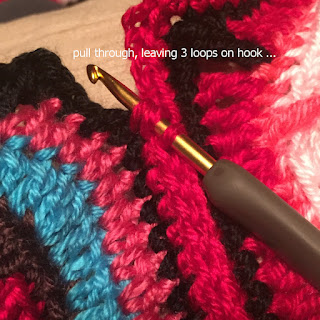I don’t have a name for this particular crochet join but I do like it.
And you can clearly see, it yields a dense & lovely line of raised chains. So for simplicity I just refer this to as the Raised Chains crochet join.

Raised Chains Crochet Join features:
- close, dense, narrow join (great for when you don’t want holes)
- has a raised texture (and flat on the other side)
- looks like top-chaining but is more raised
 Sidebar:
Sidebar:
I originally started off with Rachele Carmona’s Continuous JAYG (Join As You Go) using SC and PLT (Pull Loop Through) from YouTube. You can see that her method is also very lovely but with a different finished look. It has a raised, twisted line. She calls her method PLT (Pull Loop Through) with sc (single crochet).
For simplicity, view this as joining a Left and a Right piece. Her method is basically thus:
with yarn (from Right piece) on hook >> work a sc into the Left pc >> remove hook from loop (but hold on to loop) >> push hook into next st on Right pc >> then PLT (i.e. catch freestanding loop from Left pc and pull through the loop you have on the hook)
How to Make the Raised-Chains Crochet Join
I am just going to start this tutorial right in the middle of a piece of work; starting where I am about to make the next Raised Chain crochet join.
For simplicity, I am going to refer to the pieces to be joined as Left (piece) and Right (piece).
IMP: always have the working yarn at the back of the pieces to be joined.
Let's go....!
Nice and simple, right?










